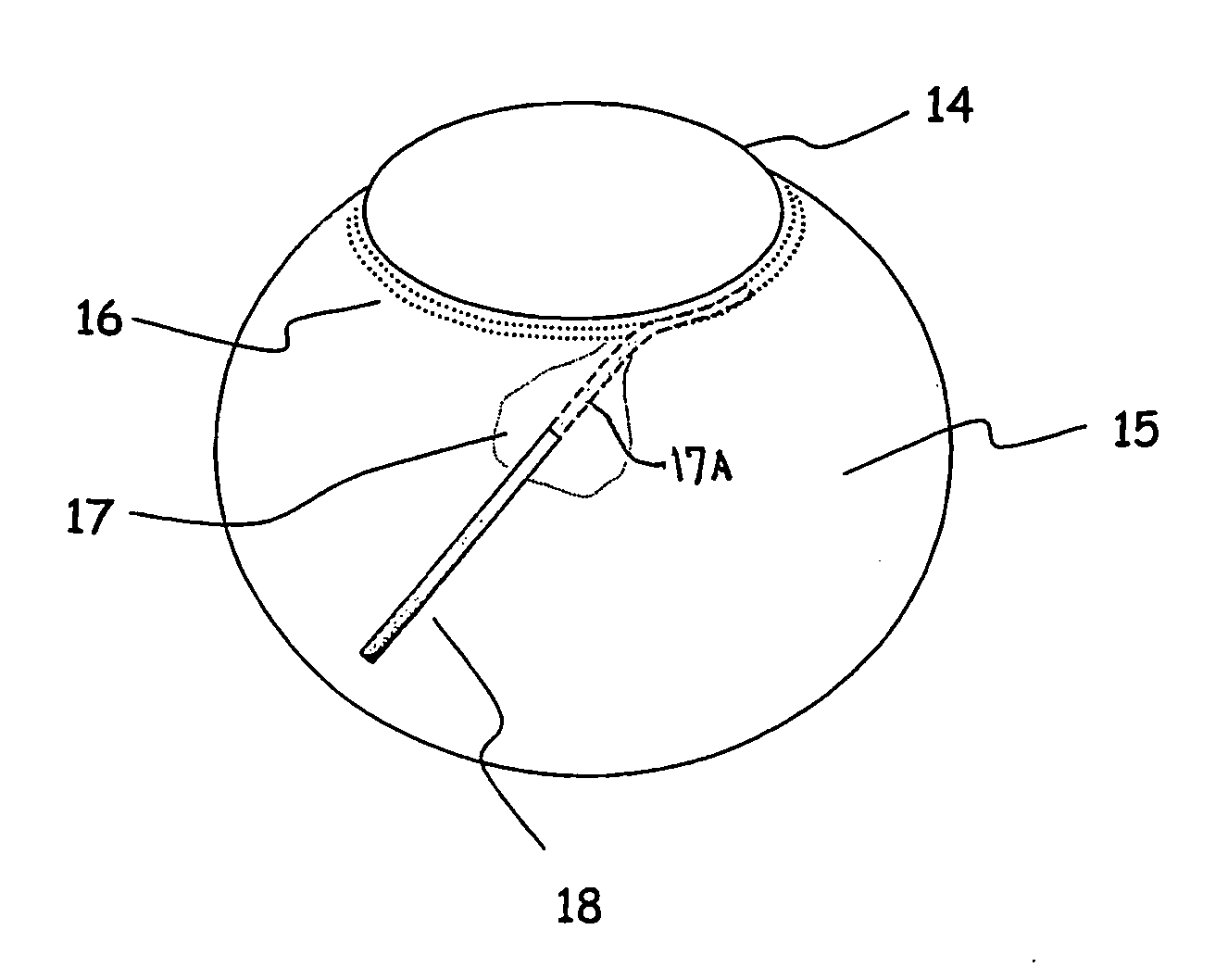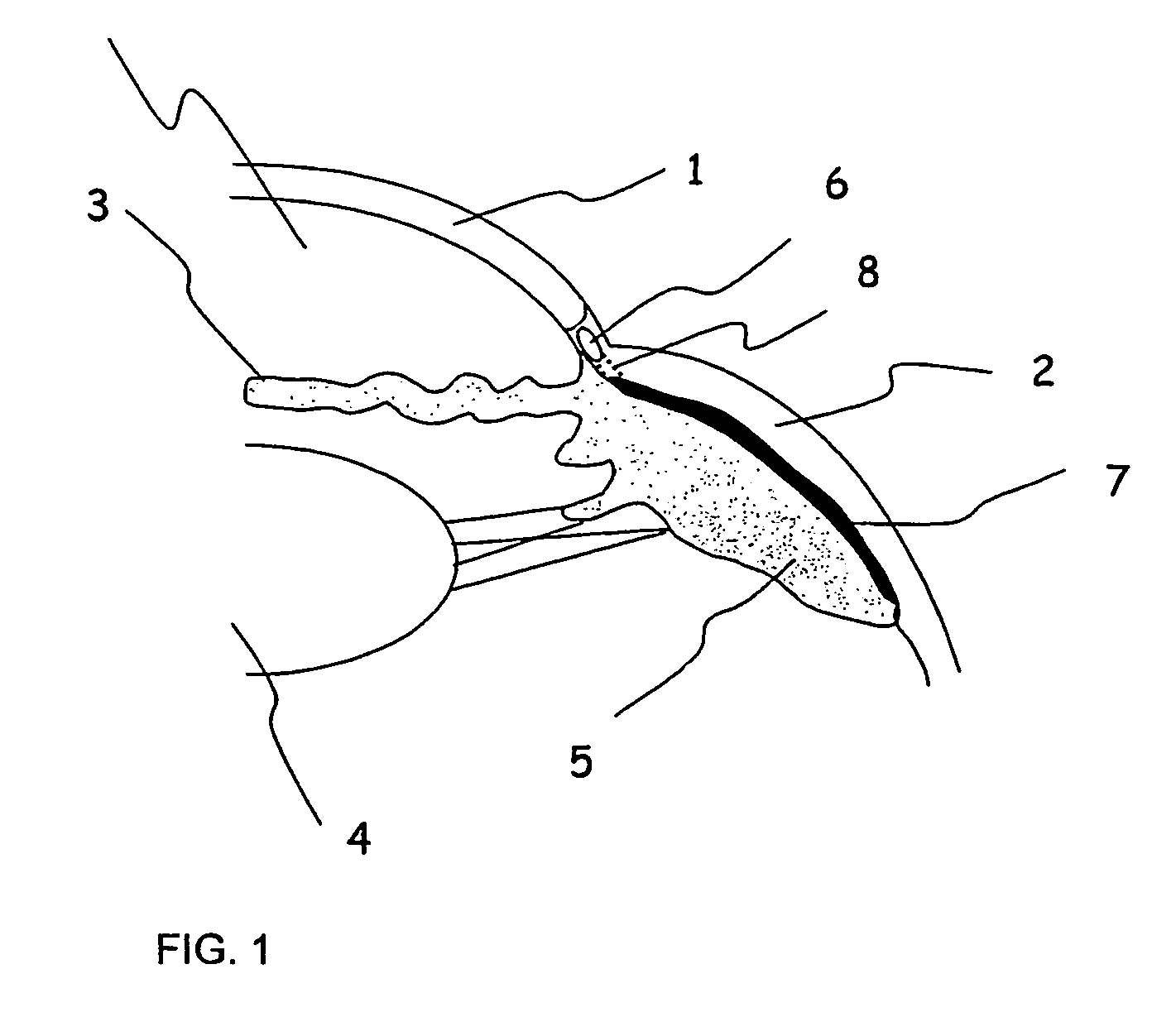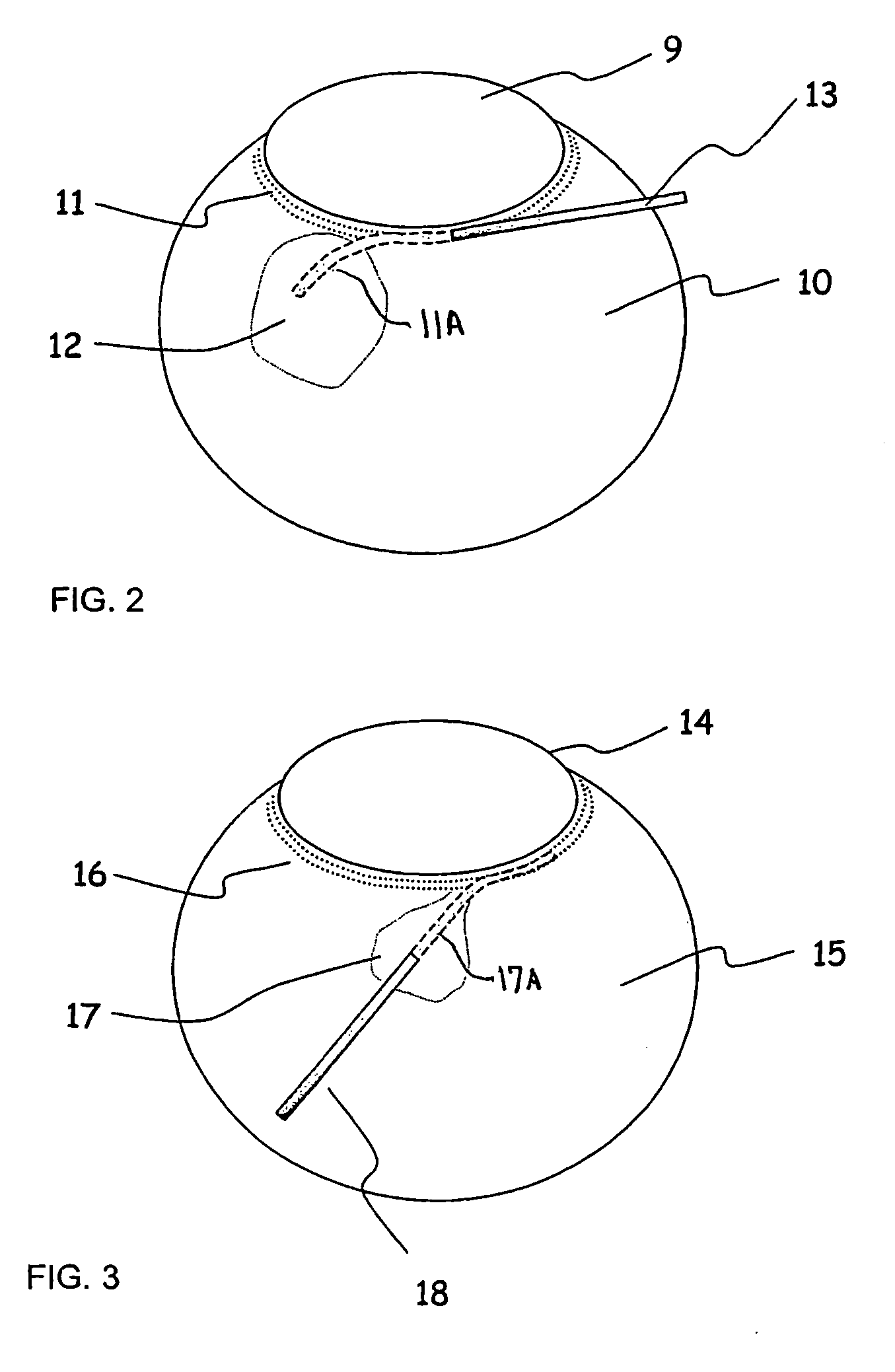Apparatus And Method For Surgical Enhancement Of Aqueous Humor Drainage
a technology of aqueous humor and enhancement, applied in the field of apparatus and method for surgical enhancement of aqueous humor drainage, can solve the problems of blebs presenting a high incidence of post-surgical complications, surgical treatment, and progressive nerve damage and vision loss
- Summary
- Abstract
- Description
- Claims
- Application Information
AI Technical Summary
Benefits of technology
Problems solved by technology
Method used
Image
Examples
example 1
[0050]An enucleated human cadaver eye was used for this test. The eye was prepared by removing any excess tissues around the limbus and replacing lost fluid until the eye was firm to the touch. A rectangular scleral flap, approximately 5 mm wide by 4 mm long, was incised posterior from the limbus in order to expose Schlemm's Canal.
[0051]A flexible microcannula prototype with an outside diameter of approximately 220 microns was used. The microcannula was fabricated with a communicating element comprised of polyimide tubing 0.006×0.008″ in diameter. Co-linear to the communicating element was a stiffening member comprised of a stainless steel wire 0.001″ diameter and a plastic optical fiber 0.004″ diameter. A heat shrink tubing of polyethylene terephthalate (PET) was used to bundle the elements into a single composite microcannula. The plastic optical fiber optic was incorporated to provide an illuminated beacon tip for localization. The beacon tip was illuminated using a battery power...
example 2
[0052]An enucleated human cadaver eye was prepared as in Example 1. Using a high resolution ultrasound imaging system developed by the applicant, an imaging scan was made of the tissues to plan the access and route for placing a shunt from the suprachoroidal space to the anterior chamber. A radial incision was made at the pars plana and extending through the sclera to expose the choroid. A microcannula (MicroFil, World Precision Instruments, Sarasota, Fla.) was employed. The microcannula comprised of a 34 gauge fused silica core tube coated with polyimide. The microcannula was inserted into the surgical incision in an anterior direction and at a small angle with respect to the scleral surface. The microcannula was advanced until the distal tip had penetrated into the anterior chamber. High resolution ultrasound imaging confirmed the cannula placement in the suprachoroidal space and extending above the ciliary body and penetrating the anterior chamber at the anterior angle. The dista...
example 3
[0054]A test was performed to evaluate a tubular implant connecting Schlemm's Canal to the suprachoroidal space. An enucleated human cadaver eye was used and prepared as in Example 1. A radial incision was made in the superio-temporal limbal region, the incision extending for approximately 4 mm and to the depth of Schlemm's Canal. The posterior end of the incision was extended inward to expose the suprachoroidal without cutting into the choroid layer. The scleral spur fibers were left intact. A tubular implant comprised of polyimide tubing, 0.0044″ ID×0.0050″ OD was fabricated. The shunt tubing was split down the middle for a distance of 0.5 mm. The two halves of the tube were then folded back to create a “Tee” shaped flange at the distal end. A bend of approximately 30° was made in the body of the tube, 0.75 mm proximal to the split. The length of the base of the “Tee” was 2.5 mm. The proximal end of the shunt was placed firstly into the SCS, then the distal end was placed into the...
PUM
 Login to View More
Login to View More Abstract
Description
Claims
Application Information
 Login to View More
Login to View More - R&D
- Intellectual Property
- Life Sciences
- Materials
- Tech Scout
- Unparalleled Data Quality
- Higher Quality Content
- 60% Fewer Hallucinations
Browse by: Latest US Patents, China's latest patents, Technical Efficacy Thesaurus, Application Domain, Technology Topic, Popular Technical Reports.
© 2025 PatSnap. All rights reserved.Legal|Privacy policy|Modern Slavery Act Transparency Statement|Sitemap|About US| Contact US: help@patsnap.com



